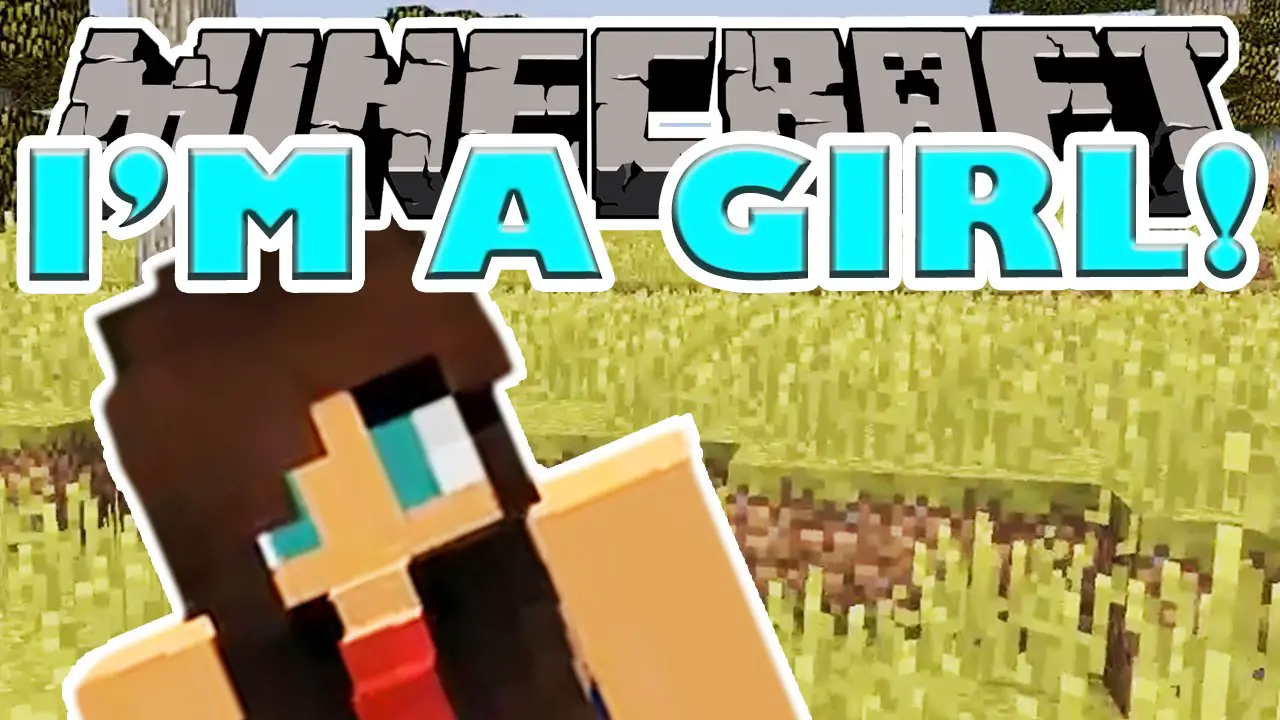In the realm of virtual worlds, Minecraft stands as a prominent beacon of creativity, exploration, and self-expression. Transcending the boundaries of traditional gaming experiences, Minecraft has evolved into a platform where players forge unique identities, construct intricate worlds, and engage in meaningful social interactions. Within this expansive virtual landscape, gender takes on a dynamic and multifaceted character, reflecting both the complexities of the real world and the boundless possibilities of the digital realm.

To delve into the intricate tapestry of gender and identity in Minecraft, one must first acknowledge the game’s inherent inclusivity. Unlike many other games, Minecraft does not impose rigid gender roles or binary choices upon its players. Instead, it presents a vast array of customization options, allowing players to craft avatars that embody their true selves, regardless of societal norms or expectations. This freedom of expression has fostered a diverse and vibrant community, where players can embrace their unique identities without fear of judgment or discrimination.

The gender-bending possibilities of Minecraft extend beyond character creation. Within the game’s vast sandbox environment, players are empowered to shape and transform their surroundings, creating worlds that reflect their individual perspectives and values. They can construct elaborate castles, whimsical cottages, or sprawling metropolises, imbuing these virtual spaces with their own unique aesthetics and narratives. In this process of world-building, players often draw inspiration from their own cultural backgrounds, personal experiences, and gender identities. As a result, Minecraft serves as a platform for self-expression and storytelling, enabling players to explore the fluidity and complexity of gender in ways that are both deeply personal and profoundly creative.

Furthermore, Minecraft promotes gender inclusivity through its multiplayer mode, which allows players to connect and collaborate on ambitious projects. This shared virtual space fosters a sense of community and belonging, where players from diverse backgrounds can come together to build, explore, and create side by side. Within these virtual communities, traditional gender roles often dissolve, as players work together to overcome challenges, solve puzzles, and achieve common goals. This collaborative environment encourages players to value each other’s contributions regardless of gender, promoting a spirit of equality and mutual respect.
While Minecraft has made significant strides in promoting gender inclusivity, it is important to acknowledge that challenges remain. As with any online platform, Minecraft is not immune to the prejudices and biases that exist in the real world. Instances of sexism, transphobia, and other forms of discrimination have been reported within the Minecraft community. Combatting these issues requires a concerted effort from players, moderators, and game developers alike. Mojang Studios, the developers of Minecraft, has taken steps to address these concerns by implementing reporting and moderation tools, as well as promoting inclusivity through official channels. However, creating a truly welcoming and respectful environment for all players requires ongoing commitment and collaboration from the entire Minecraft community.
In conclusion, Minecraft stands as a testament to the transformative power of virtual spaces in fostering gender inclusivity and self-expression. By providing players with the freedom to create and customize their avatars, build worlds that reflect their unique perspectives, and engage in collaborative play, Minecraft challenges traditional gender norms and empowers players to explore their identities in new and meaningful ways. While there is still work to be done to address instances of discrimination within the Minecraft community, the game’s inherent inclusivity and the dedication of its players and developers offer hope for a future where all players can feel safe, respected, and empowered to express their true selves within the boundless world of Minecraft.


This article is a great exploration of the complex and often overlooked topic of gender identity in virtual spaces. The author does an excellent job of weaving together personal anecdotes, research findings, and theoretical frameworks to provide a nuanced and thought-provoking analysis of the subject.
I found this article to be incredibly disappointing. The author’s reliance on outdated research and anecdotal evidence undermines the credibility of their arguments. Furthermore, the article fails to adequately address the intersectionality of gender identity with other forms of oppression, such as racism and classism.
The author makes some interesting points about the role of virtual spaces in shaping gender identity. However, I believe that the article could have benefited from a more thorough discussion of the potential risks and dangers associated with online interactions.
I disagree with the author’s claim that virtual spaces are inherently more inclusive than physical spaces. In my experience, online communities can be just as hostile and exclusionary as offline communities.
It’s ironic that an article about gender identity in virtual spaces would fail to mention the iconic character of Lara Croft, one of the most recognizable female protagonists in video game history.
Oh, look, another article about how video games are ruining our children. Yawn.
I identify as a Minecraft Creeper. Does that make me a terrorist?
The author’s analysis of the relationship between gender and space is particularly insightful. Their discussion of the ways in which virtual spaces can both reinforce and challenge traditional gender norms is particularly thought-provoking.
This article is a waste of time. The author doesn’t provide any new insights into the topic of gender identity in virtual spaces. It’s just a rehash of the same old tired arguments.
I found this article to be a valuable contribution to the literature on gender identity in virtual spaces. The author provides a comprehensive overview of the research on this topic, and their analysis is both insightful and thought-provoking.
I disagree with the author’s claim that virtual spaces are more inclusive than physical spaces. In my experience, online communities can be just as hostile and exclusionary as offline communities.
It’s ironic that an article about gender identity in virtual spaces would fail to mention the iconic character of Lara Croft, one of the most recognizable female protagonists in video game history.
Oh, look, another article about how video games are ruining our children. Yawn.
I identify as a Minecraft Creeper. Does that make me a terrorist?
The author’s analysis of the relationship between gender and space is particularly insightful. Their discussion of the ways in which virtual spaces can both reinforce and challenge traditional gender norms is particularly thought-provoking.